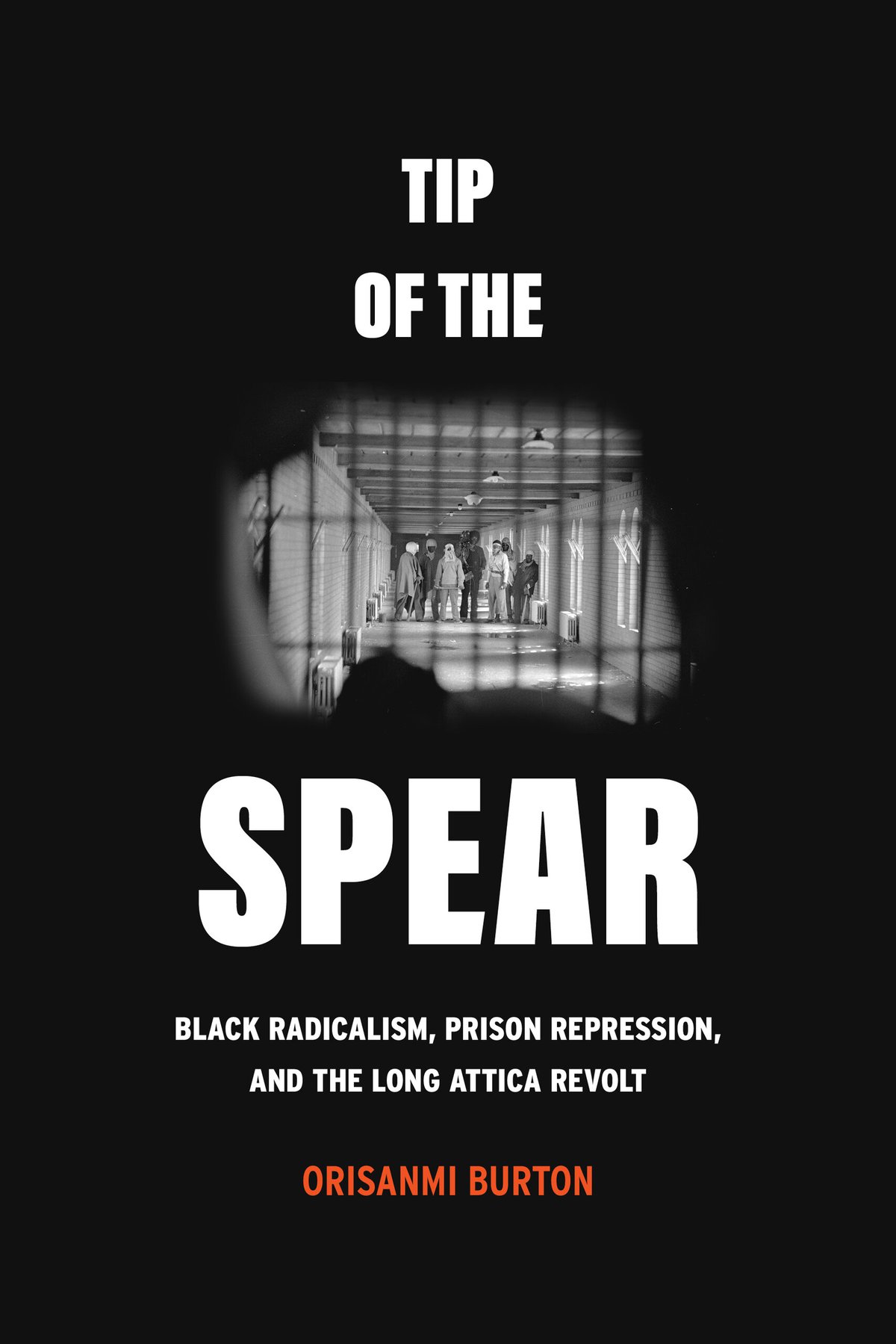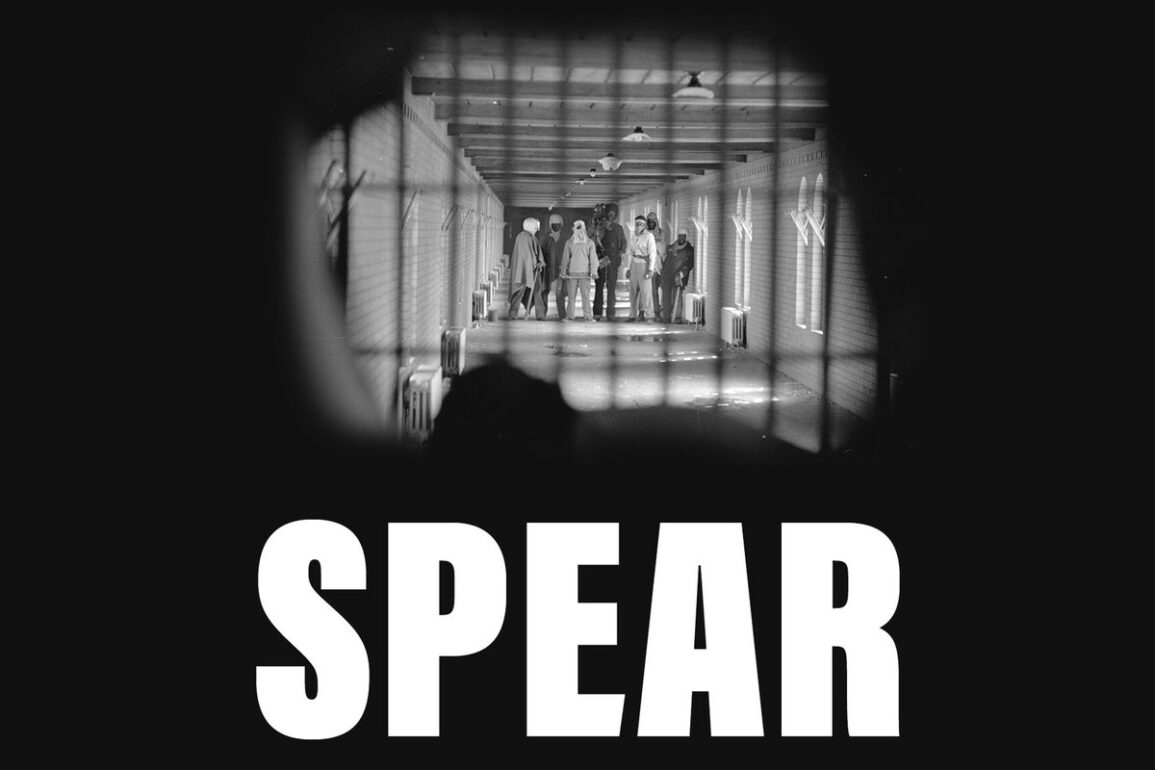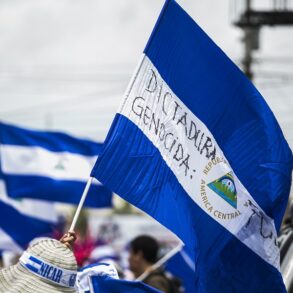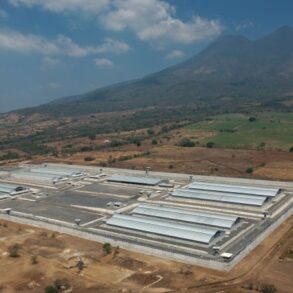
Orisanmi Burton, an assistant professor of anthropology at American University, opens his first book, Tip of the Spear, with a 1973 speech given by Queen Mother Audley Moore to the men incarcerated in the Green Haven Correctional Facility in upstate New York. The occasion was the second anniversary of the four-day prison rebellion and subsequent massacre at Attica Prison. Moore, a well-known communist and Pan-Africanist, juxtaposed the crimes that placed her audience behind bars with the crimes of white supremacists who had, for centuries, plundered other lands and turned human beings into chattel slaves. “Have you ever dropped bombs on people and killed whole countries?,” she asked them.
Tip of the Spear: Black Radicalism, Prison Repression, and the Long Attica Revolt
By Orisanmi Burton
University of California Press, 328 pages
Release date: October 31, 2023
Moore had been invited to Green Haven by The Think Tank, a prisoner-run organization that was officially recognized by prison administrators and her fiery and uncensored speech was not only sanctioned, but applauded. In retrospect, it seems shocking.
“After Attica, the prisoncrats wanted to make sure that prisoners would not rebel again,” Burton tells The Progressive. “They were terrified that another Attica would happen.”
Indeed, Green Haven wasn’t alone in loosening restrictions; other prisons followed similar practices with the intention of ensuring docility among the incarcerated. The shift followed what Burton calls the Long Attica Revolt—a rebellion that, in September 1971, left thirty-nine prisoners, prison guards, and other prison employees dead and dozens injured after the National Guard was called in by New York’s Governor Nelson Rockefeller to restore “order.” Burton’s framework places that revolt within the widespread prisoner resistance and abolitionist organizing that began in the late 1960s and continues today.
Politicians and lawmakers, Burton writes, were unsettled by the largely Black and brown-led uprisings that were taking place in the nation’s prisons and understood that “incarcerated people possess a latent insurgency potential.” After all, before Attica, prisoner unrest had been building for several years: the year 1970 saw prisoners at five New York City prisons rebel, take hostages, and demand access to law books, healthier and more-plentiful food, clean clothing, and an end to the routine violence between the imprisoned and their captors. The next two years also witnessed increased prison rioting, with seventeen rebellions in 1971 and forty-eight in 1972.
Burton gives readers a deeply-felt look at the activists who participated in these revolts, many of them affiliated with the Black Panther Party, the Young Lords, and other revolutionary groupings. His interviews with survivors are incisive and reflect an appreciation of the political knowledge and passion that led these men to foment rebellion, however risky.
Their agenda—reducing oppressive conditions inside, as well as supporting social justice, racial justice, and social change more broadly—goes one step further, upending stereotypes about male prisoners.
“I wanted to show the dynamism of imperfect people,” Burton tells me. “It is very easy to write off incarcerated men, particularly incarcerated Black men, as inherently patriarchial, sexist, and homophobic. I wanted to acknowledge that many of these men had committed gender violence in prison and in their communities. But they were also struggling to evolve. We can see that their actions outpace their rhetoric when they talk about taking intimate walks with one another or recount tucking each other in at night. We can see that human relationships are always complex.”
Similarly, Burton’s evocation of the short-lived community that emerged during the Attica uprising is profoundly moving. “The Attica rebels were stargazers,” he writes. One of his sources, John “Dacajeweiah” Hill, told him a story that illustrates this: After noticing an elderly man sobbing uncontrollably in the yard, Dacajeweiah approached him and asked what was wrong. The answer stunned him. “I am so happy,” the man replied. “This is the first time I’ve seen the stars in twenty-three years.” For Dacajeweiah—and Burton—this affirmed that freedom can be tangible, an emotional and sensory relationship between human and universe.
That this and other relationships were cut short by the violence that ended the insurrection is tragic. Nonetheless, Burton concludes that for people like Dacajeweiah, the memory of the rebellion remains strong: “More than fifty years later, Attica remains a living example that collectively, ordinary people can be more than a sum of their parts.”
That, however, is not the revolt’s only legacy.
Burton notes that a number of post-rebellion pacification strategies were implemented in the aftermath of Attica and other prison riots. Among them, prisons began to allow televisions in individual cells; literacy, GED, and college classes became available; writing groups were established; and libraries expanded.
The result, Burton concludes, has been a mixed blessing, and one that he wants today’s abolitionists to grapple with. “The planners and administrators co-opted the demands of the prison movement and redeployed them in ways that strengthened their ability to dominate people on both sides of the prison walls,” he argues. “They created new and improved prisons, bolstered security protocols, augmented their labor force, and legitimized their power, all while appearing to bow to radical demands.”
This is true. But while I think that the benefits of these reforms outweigh the negatives, his point is well taken, especially since the changes have not abolished either the physical or psychological abuse of the incarcerated or stopped the exponential growth of those locked-up.
Burton’s interviews with survivors are incisive and reflect an appreciation of the political knowledge and passion that led these men to foment rebellion, however risky.
As Burton explains, “The Long Attica Revolt revealed to actors at the highest levels of state power that to effectively control captive populations, they would need more and better prisons.” The result has been a massive carceral building boom as well as the development of new forms of carceral control including house arrest and electronic monitoring. All told, the state has proven itself to be both strategically adroit and flexible.
But so is the growing movement for prison abolition—a movement that Burton says goes back to the prison rebellions of the early 1970s. He believes that the lessons of these rebellions continue to reverberate and to impact contemporary anti-carceral activists.
“Attica is the Attica Brothers Foundation, an organization led by Attica survivors who are preserving the memory of their struggle,” he writes in the book’s epilogue. “Attica is the 2013 Pelican Bay hunger strike that began while imprisoned members of rival gangs collectively resisted indefinite solitary confinement . . . . Attica is the international movement to oppose imperialist war, colonialism, displacement, apartheid, and racist nationalism . . . . Attica is the struggle to develop progressive, radical, and revolutionary Black masculinities that are accountable to Black communities.”
This post was originally published on this site be sure to check out more of their content.







